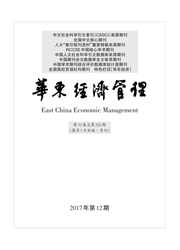

 中文摘要:
中文摘要:
文章采用空间基尼系数和空间自相关分析法揭示长江经济带物流产业集聚的时空演变特征,并利用空间杜宾模型对物流产业集聚水平的影响因素进行了实证分析。研究结果表明:长江经济带物流产业集聚水平呈现显著的空间正相关性,存在明显的空间二元结构;经济发展水平、工业发展水平、消费水平、交通基础设施、人力资本、社会资本对物流产业集聚水平均具有显著的正效应,其中,人力资本和社会资本的影响程度较大,对外开放程度对物流产业集聚水平的正效应不显著,而政府干预对物流产业集聚水平具有显著的负效应;物流产业集聚自身的滞后型空间效应和影响因素的滞后型空间效应也是影响长江经济带物流产业集聚水平的重要因素。
 英文摘要:
英文摘要:
The paper employs the methods of spatial Gini coefficient and spatial autocorrelation analysis to reveal the temporal and spatial evolution characteristics of logistics industry agglomeration in the Yangtze River Economic Belt, and uses the Spatial Durbin Model to conduct an empirical analysis on the influencing factors of logistics industry agglomeration level. The results indicate that logistics indus- try agglomeration level in the Yangtze River Economic Belt shows a significant positive spatial correlation, but the whole space shows an obvious dual structure. The economic development level, the industrial development level, the consumption level, the transportation infra- structure, the human capital and the social capital have significant positive effects on logistics industry agglomeration level, and the effect degree of the human capital and the social capital is larger. The positive effect of the opening degree is not significant, but the government intervention has a significant negative effect on logistics industry agglomeration level. The lag type spatial effect of logistics industry ag- glomeration and its influencing factors are also the important factors that affect the logistics industry agglomeration level in the Yangtze River Economic Belt.
 同期刊论文项目
同期刊论文项目
 同项目期刊论文
同项目期刊论文
 期刊信息
期刊信息
